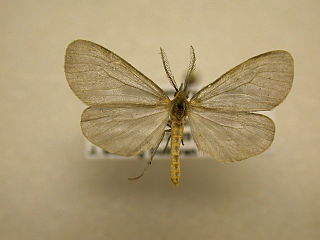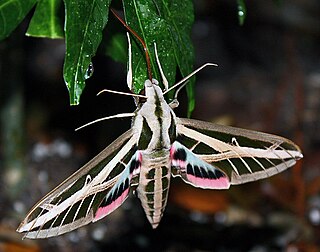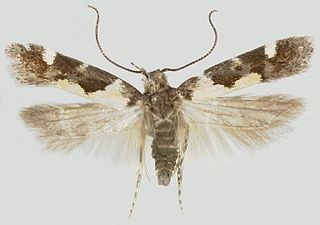
North Carolina is a state in the southeastern region of the United States. North Carolina is the 28th largest and 9th-most populous of the 50 United States. It is bordered by Virginia to the north, the Atlantic Ocean to the east, Georgia and South Carolina to the south, and Tennessee to the west. Raleigh is the state's capital and Charlotte is its largest city. The Charlotte metropolitan area, with an estimated population of 2,569,213 in 2018, is the most-populous metropolitan area in North Carolina, the 23rd-most populous in the United States, and the largest banking center in the nation after New York City. The Raleigh metropolitan area is the second-largest metropolitan area in the state, with an estimated population of 1,362,540 in 2018, and is home to the largest research park in the United States, Research Triangle Park.

Elizabeth City is a city in Pasquotank County, North Carolina, in the United States. As of the 2010 census, it had a population of 18,683. Elizabeth City is the county seat and largest city of Pasquotank County. It is the cultural, economic and educational hub of the sixteen-county Historic Albemarle region of northeastern North Carolina.

The Arctiinae are a large and diverse subfamily of moths, with around 11,000 species found all over the world, including 6,000 neotropical species. This group includes the groups commonly known as tiger moths, which usually have bright colours, footmen, which are usually much drabber, lichen moths, and wasp moths. Many species have "hairy" caterpillars that are popularly known as woolly bears or woolly worms. The scientific name of this subfamily refers to this hairiness. Some species within the Arctiinae have the word tussock in their common name due to people misidentifying them as members of the Lymantriinae based on the characteristics of the larvae.

Stone Mountain State Park is a 14,353-acre (58.08 km2) North Carolina state park in Alleghany County and Wilkes County, North Carolina.

Hemaris diffinis, the snowberry clearwing, is a moth of the order Lepidoptera, family Sphingidae. This moth is sometimes called "hummingbird moth" or "flying lobster". This moth should not be confused with the hummingbird hawk-moth of Europe.

Pagara is a monotypic moth genus in the family Erebidae. Its only species, Pagara simplex, the mouse-colored lichen moth, is found in North America, where it has been recorded from Alabama, Arkansas, Florida, Georgia, Illinois, Indiana, Iowa, Kansas, Kentucky, Maryland, Mississippi, New Hampshire, North Carolina, Ohio, Oklahoma, South Carolina and Tennessee. Both the genus and species were described by Francis Walker in 1856.
Richard Bayard Dominick was an American ophthalmologist, outdoorsman, and amateur lepidopterist. He is best known for his extensive collection of moths and butterflies in South Carolina. He established the Wedge Entomology Research Foundation for the publication of a series of monographs entitled the Moths of America North of Mexico.

Eumorpha fasciatus, the banded sphinx moth, is a moth of the family Sphingidae. The species was first described by Johann Heinrich Sulzer in 1776.

Stegasta bosqueella is a species of moth of the family Gelechiidae. It is found in North America, including Alabama, Florida, Georgia, Illinois, Iowa, North Carolina, Oklahoma, South Carolina, Texas and Virginia.
Crambidia pura, the pure lichen moth, is a moth of the family Erebidae. It was described by William Barnes and James Halliday McDunnough in 1913. It is found in North America, including Arizona, Florida, Georgia, Kentucky, Maryland, Mississippi, New Jersey, North Carolina, Ohio, Ontario, South Carolina, Tennessee, Texas and Wisconsin.
Spilosoma latipennis, the pink-legged tiger moth, or the red-legged diacrisia, is a moth in the family Erebidae. It was described by Richard Harper Stretch in 1872. It is found in eastern North America, where it has been recorded from Georgia, Indiana, Iowa, Kansas, Kentucky, Maine, Maryland, New Brunswick, New York, North Carolina, Ohio, Ontario, Pennsylvania, South Carolina, West Virginia and Wisconsin.

Nemapogon clematella, the barred white clothes moth, is a moth of the family Tineidae. It is found in most of Europe and in North America, where it has been recorded from Maryland and North Carolina. The habitat consists of woodlands.

Arogalea cristifasciella, the stripe-backed moth, is a moth of the family Gelechiidae. It is found in North America, where it has been recorded from Alabama, Arkansas, Connecticut, Florida, Georgia, Illinois, Indiana, Kansas, Kentucky, Louisiana, Maine, Maryland, Massachusetts, Michigan, Mississippi, Missouri, New Hampshire, New Jersey, New York, North Carolina, Ohio, Oklahoma, Ontario, Quebec, South Carolina, Tennessee, Texas, Virginia, West Virginia and Wisconsin.

Diastictis argyralis, the white-spotted orange moth, is a moth in the family Crambidae. It was described by Jacob Hübner in 1818. It is found in North America, where it has been recorded from Colorado, Florida, Georgia, Indiana, Maine, Maryland, Mississippi, North Carolina, Ohio, Ontario, South Carolina, Tennessee, Texas and Virginia.

Glyphodes pyloalis, the lesser mulberry snout moth, lesser mulberry pyralid or beautiful glyphodes moth, is a moth in the family Crambidae. It was described by Francis Walker in 1859. It is found in Iran, China, Japan, India, Indonesia (Sumatra), Sri Lanka, Taiwan, the Democratic Republic of the Congo, Equatorial Guinea, Mozambique and North America, where it has been recorded from Florida, Maryland, North Carolina, South Carolina and Virginia.
Loxostegopsis merrickalis, or Merrick's pyralid moth, is a moth in the family Crambidae. It was described by William Barnes and James Halliday McDunnough in 1918. It is found in North America, where it has been recorded from Alabama, California, Florida, Georgia, Illinois, Indiana, Kansas, Maine, Manitoba, Maryland, Massachusetts, Minnesota, New Hampshire, North Carolina, North Dakota, Ohio, Ontario, Pennsylvania, Quebec, South Carolina, Texas, West Virginia and Wisconsin.

Doryodes spadaria, the dull doryodes moth, is a moth of the family Erebidae. The species was first described by Achille Guenée in 1857. It is found in North America, where it has been recorded from coastal Florida, Georgia, North Carolina, South Carolina and Texas. The habitat consists of salt marshes.
Coleotechnites canusella, the banded jack-pine needleminer moth, is a moth of the family Gelechiidae. It is found in North America, where it has been recorded from British Columbia, Washington, Alabama, Arizona, Louisiana, New Mexico and South Carolina.
Glyphidocera lactiflosella, the five-spotted glyphidocera moth, is a moth in the family Autostichidae. It was described by Vactor Tousey Chambers in 1878. It is found in North America, where it has been recorded from Alabama, Arkansas, Florida, Georgia, Louisiana, Maine, Mississippi, North Carolina, South Carolina, Tennessee and Texas.













